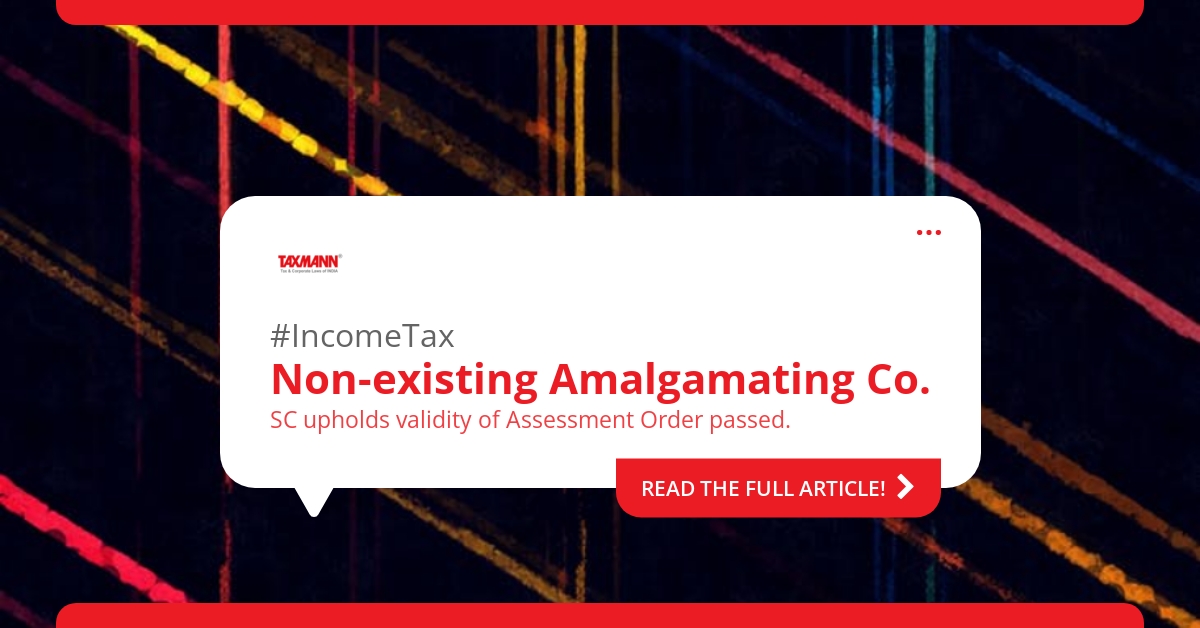SC upholds validity of Assessment Order passed in name of non-existing amalgamating Co.
- News|Blog|Income Tax|
- 2 Min Read
- By Taxmann
- |
- Last Updated on 7 April, 2022

Case Details: PCIT v. Mahagun Realtors (P.) Ltd. - [2022] 137 taxmann.com 91 (SC)
Judiciary and Counsel Details
-
- Uday Umesh Lalit and S. Ravindra Bhat, JJ.
Facts of the Case
Assessee-Mahagun Realtors Private Limited (Amalgamating Co.) was engaged in the development of the real estate. Assessee amalgamated with Mahagun India Private Limited by virtue of an order of the High Court.
After such amalgamation, survey proceedings were conducted in respect of the assessee. During proceedings, some discrepancies in its books of account were noticed. Assessing Officer (AO) passed the assessment order making several additions under various heads. The assessment order showed the assessee as “Mahagun Relators Private Ltd, represented by Mahagun India Private Ltd”.
Said order was challenged before lower authorities and courts held that the assessment order passed in the name of non-existing entity would be without jurisdiction. The matter reached the Supreme Court.
Supreme Court Held
The Supreme Court held that amalgamation is unlike the winding up of a corporate entity. In the case of amalgamation, the outer shell of the corporate entity is undoubtedly destroyed. However, the business and the adventure lives on within a new corporate residence, i.e., the transferee company.
Therefore, it is essential to look beyond the mere concept of the destruction of the corporate entity, which ends or terminates any assessment proceedings. There are analogies in civil law and procedure whereupon amalgamation, the cause of action, or the complaint does not per se cease – depending of course, upon the structure and objective of enactment.
Corporate death of an entity upon amalgamation per se invalidates an assessment order ordinarily cannot be determined on a bare application of Section 481 of the Companies Act, 1956 (and its equivalent in the 2013 Act), but would depend on the terms of the amalgamation and the facts of each case.
In the instant case, there was no intimation by the assessee regarding the amalgamation of the company. The return of amalgamating Co. was also filed pursuant to notice by the AO. Though that entity ceased to exist in law, appeals were filed on its behalf before the CIT(A), and a cross-appeal was filed before ITAT.
Thus, the assessee’s conduct, commencing from the date the search took place and before all forums, reflects that it consistently held itself out as the assessee. Accordingly, the order of the High Court was to be set aside, and the matter is restored to file of ITAT, which shall proceed further.
Disclaimer: The content/information published on the website is only for general information of the user and shall not be construed as legal advice. While the Taxmann has exercised reasonable efforts to ensure the veracity of information/content published, Taxmann shall be under no liability in any manner whatsoever for incorrect information, if any.

Taxmann Publications has a dedicated in-house Research & Editorial Team. This team consists of a team of Chartered Accountants, Company Secretaries, and Lawyers. This team works under the guidance and supervision of editor-in-chief Mr Rakesh Bhargava.
The Research and Editorial Team is responsible for developing reliable and accurate content for the readers. The team follows the six-sigma approach to achieve the benchmark of zero error in its publications and research platforms. The team ensures that the following publication guidelines are thoroughly followed while developing the content:
- The statutory material is obtained only from the authorized and reliable sources
- All the latest developments in the judicial and legislative fields are covered
- Prepare the analytical write-ups on current, controversial, and important issues to help the readers to understand the concept and its implications
- Every content published by Taxmann is complete, accurate and lucid
- All evidence-based statements are supported with proper reference to Section, Circular No., Notification No. or citations
- The golden rules of grammar, style and consistency are thoroughly followed
- Font and size that’s easy to read and remain consistent across all imprint and digital publications are applied




